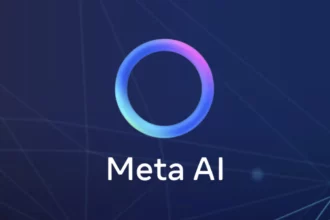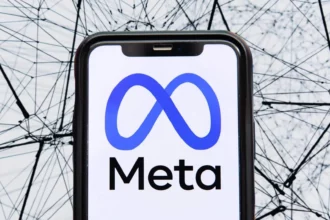Are you ready to boost your knowledge about XGBoost? Well, buckle up because today we’re diving into the fascinating world of XGBoost learning rate. Whether you’re a data enthusiast, a machine learning expert, or just someone curious about the magic behind XGBoost, this blog post is for you. We’ll unravel the mysteries of the learning rate, decode ETA, and even tackle the dreaded overfitting monster. So, grab a cup of coffee and let’s embark on this exhilarating XGBoost journey together!
Table of Contents
ToggleUnderstanding the XGBoost Learning Rate
The journey to mastering the XGBoost algorithm often begins with a deep understanding of one of its most vital hyperparameters: the learning rate. Known as eta or step size shrinkage within the XGBoost universe, the learning rate is akin to a careful gardener who determines how much water each plant in the garden receives. Just as over- or under-watering can hinder a plant’s growth, the learning rate controls the extent to which each new model contributes to the ensemble’s prediction, ultimately affecting the model’s ability to learn from data.
| Term | Description | Impact |
|---|---|---|
| Learning Rate (eta) | Hyperparameter controlling new estimator’s contribution | Modulates model learning speed and efficiency |
| Max_delta_step | Maximum step size for leaf node estimates | Helps constrain the model and prevent overfitting |
Imagine the learning rate as the pace at which a student absorbs new material. A higher learning rate could lead to quick learning but may also mean missing crucial details, whereas a lower learning rate ensures a thorough understanding, although it requires more time and patience. In the context of XGBoost, a fine-tuned learning rate ensures that each new tree built makes a proportionate impact on the final outcome, neither dominating the ensemble with rapid, possibly erratic predictions nor lagging with overly cautious, minute adjustments.
Understanding the delicate balance of the learning rate is essential, as it dictates the model’s progression in reducing error. The efficacy of its learning trajectory can be compared to a meticulous artist, where each stroke of the brush—each new estimator—must be applied with precise pressure. Too much, and the painting loses its subtlety; too little, and the canvas remains unchanged. This is the art of gradient boosting, where the learning rate orchestrates the harmony between speed and accuracy in predictive modeling.
When faced with the challenge of overfitting, the learning rate becomes an even more critical factor. It’s a tool that, when wielded with expertise, can help the model generalize better to unseen data. It does this by moderating the influence of each tree, preventing any single one from steering the model too far based on the idiosyncrasies of the training set.
In the forthcoming sections, we’ll delve deeper into other strategies to combat overfitting and how to calibrate the learning rate just right. This exploration will guide us through the intricacies of setting the optimal pace for our XGBoost model’s learning process—ensuring it’s neither too hasty to trip over itself nor too sluggish to reach its full potential.
Role of Alpha in XGBoost
Imagine a seasoned artist meticulously blending colors on a canvas. With each stroke, the masterpiece slowly comes to life, guided by the artist’s controlled hand. In the realm of XGBoost, this artist’s touch is mirrored by the hyperparameter known as Alpha (α), which denotes the learning rate. It acts with precision to determine how each successive tree influences the growing ensemble of models. The Alpha parameter holds the reins, ensuring that each tree shapes the final prediction with just the right amount of influence, much like the artist ensures each hue contributes to the overall beauty of the painting.
As XGBoost constructs its ensemble, it’s the Alpha parameter that calibrates the weight of each individual decision tree’s predictions. This ‘steering wheel’ isn’t just about direction; it’s about the finesse with which it navigates the complex path of model training. Too heavy a hand, and the model may veer off into the rough terrain of overfitting, memorizing the training data instead of learning from it. Too light, and the model may trudge too slowly, not capturing the nuances of the data efficiently.
The importance of Alpha in XGBoost cannot be overstated. It is a critical factor in the model’s performance, akin to the pivotal role of a conductor in an orchestra, ensuring that every instrument plays in harmony and contributes to the symphony’s grandeur. By fine-tuning Alpha, data scientists orchestrate the delicate balance between speed and accuracy, allowing XGBoost to outperform simpler models like logistic regression with its robust, nuanced predictions.
In the grand scheme of machine learning algorithms, XGBoost stands out for its capacity to handle vast amounts of data and intricate patterns. The Alpha parameter is a testament to the algorithm’s flexibility and power, much as a maestro’s baton elevates a musical performance. It empowers practitioners to mold the predictive prowess of their models with a level of control that is both subtle and profound.
Thus, understanding and adjusting Alpha is not just a technical task—it is an art form that, when mastered, can lead to predictive models of exceptional accuracy and grace. The next time you tune the Alpha in your XGBoost model, envision the gentle strokes of the artist’s brush or the maestro’s baton, and steer your model to perfection with the same blend of precision and creativity.
Decoding ETA in XGBoost
In the intricate dance of machine learning, XGBoost takes center stage with its robust ensemble methods and precision tuning capabilities. At the heart of its performance lies a seemingly modest yet pivotal parameter known as ETA, often equated with the term learning rate. This fundamental hyperparameter commands each step taken towards the goal of an optimized model, ensuring each movement is neither too bold nor too timid.
Picture the ETA as the choreographer in the ballet of algorithms, dictating the pace at which the model learns from the data. A high ETA may lead the model to stumble, hastily overfitting to the training data without mastering the subtle complexities. On the other hand, a low ETA nudges the model to take incremental, deliberate steps, gracefully balancing the trade-off between training speed and model accuracy.
The essence of ETA in XGBoost is to multiply the output of each decision tree by a factor smaller than one. This gentle modulation allows the model to fit the data more slowly, reducing the risk of a performance faux pas known as overfitting. With each tree contributing a controlled portion of knowledge, the ensemble grows wiser in a measured, harmonious manner.
But setting the ETA is no mere guesswork; it’s a deliberate choice, akin to selecting the tempo for a musical composition. It requires a keen understanding of the dataset’s rhythm and the symphony you wish to create with your predictions. As we move through the melody of model tuning, let’s remember the power of ETA – the maestro of learning rates in the XGBoost orchestra.
Setting the Right Learning Rate
Embarking on the journey of model training, one must approach the task of setting the learning rate with the finesse of a master artisan. A good learning rate for XGBoost is considered to be within the sweet spot of 0.001 to 0.01. Initiating the training with a lower learning rate can be likened to the careful first strokes of a painter, ensuring that the foundation is solid before adding layers of complexity.
To incrementally uncover the optimal solution, one might start at the lower end of the spectrum, allowing the model to absorb the data’s nuances gently. Gradually, as the model’s understanding deepens, the learning rate can be adjusted upwards, akin to turning up the volume on a speaker, intensifying the model’s ability to differentiate between signal and noise.
Through this calibrated approach, the model is sculpted with precision, as a gardener tends to their plants, trimming here and nurturing there, until the final form emerges – robust, elegant, and ready to thrive in the wilds of new, unseen data.
Overfitting in XGBoost and How to Control It
Imagine you’re tailoring a suit. You want it to fit perfectly—not too tight, not too loose. In the world of machine learning, overfitting is akin to a suit that’s too snug, shaped precisely to the mannequin but unsuitable for anyone else. The XGBoost algorithm, while powerful, is not immune to this pitfall. It can sometimes tailor its predictions too closely to the training data, failing to adapt to the new, unseen data it encounters in the wild.
Fortunately, XGBoost offers a wardrobe of parameters to prevent this fashion faux pas, enabling you to craft a model that’s just the right fit. Let’s explore the tools at our disposal:
- Max_depth: This parameter is like the seam of the suit, determining how deep the decision trees can grow. A larger max_depth means a more intricate fit, but too much complexity can lead to overfitting. Conversely, a smaller max_depth may result in an overly simple model that doesn’t capture the nuances of the data. Finding the sweet spot is crucial, akin to ensuring our suit is neither too tight nor too baggy.
- Min_child_weight: Similar to choosing the right fabric weight for different seasons, min_child_weight defines the minimum sum of instance weight (hessian) needed in a child node. It’s a subtle way to regulate the model’s complexity, much like picking a heavier fabric for winter, to prevent overfitting.
- Gamma: This is the cost of adding a new partition to the model, like the price of an extra pocket on a suit. It serves as a regularization parameter—if the cost (gamma value) is too high, the model will avoid making additional partitions unless they significantly improve the fit.
But what about the unpredictable, the random elements that can make or break the fit? Just as a tailor might account for the way fabric moves, XGBoost introduces randomness to ensure the model can handle real-world variability:
- Subsample: This parameter controls the fraction of the training data to be randomly sampled for each tree. Think of it as choosing which customers to measure to create a versatile suit pattern that fits a wider audience—not just the mannequin.
- Colsample_bytree: It determines the fraction of features to consider while building each tree. It’s like deciding on the range of suit sizes to offer, ensuring that the final product can cater to various body types.
By judiciously adjusting these parameters, practitioners can weave together a model that strikes the perfect balance between fitting the training data and maintaining the versatility to perform well on new, unseen data. Like the art of bespoke tailoring, it requires a keen eye for detail, patience, and practice to find the ideal settings that confer elegance and functionality upon your XGBoost model.
Keep in mind, the journey to prevent overfitting doesn’t end here. As we move forward, we’ll delve into the delicate interplay of gradient descent and learning rates, further refining our approach to model training. Stay tuned.
Learning Rate in Gradient Descent
The journey toward optimal machine learning model performance is akin to a carefully calibrated dance between speed and precision, and the learning rate is the rhythm that guides the steps. Within the realm of gradient descent, a pivotal optimization algorithm for machine learning, the learning rate holds the reins, determining how swiftly or cautiously the model converges upon the coveted minima of the loss function.
The learning rate isn’t merely a number—it’s a navigator. Set it too high, and you risk overshooting the target, akin to a hiker leaping past the peak without realizing it. Conversely, a learning rate too low is like taking baby steps toward the summit of a mountain; progress is painfully slow, and you might run out of time or resources before you ever see the view from the top. This delicate balance of the learning rate is a hyperparameter that requires a keen eye and a willingness to experiment for perfection.
Traditionally, values such as 0.1, 0.01, or 0.001 are starting points, but the true art lies in the subtle tuning. Like crafting a masterful brew, one must taste and adjust, for each dataset has its own unique flavor, and each model its own particular needs. Selecting the ideal learning rate is a blend of science and intuition, requiring both calculations and educated guesses.
In the context of XGBoost, which builds upon the foundation of gradient descent, the learning rate—also known as eta—plays a starring role. It dictates the extent to which each new tree influences the final ensemble. Imagine each tree as a voice in a choir; the learning rate influences how loudly each voice sings, working in harmony to create a symphony of predictive accuracy. A higher learning rate means each tree has a stronger say, potentially leading to a more complex model, but one that’s also more prone to the siren song of overfitting.
As we weave through the tapestry of model building, the learning rate is the thread that must be adjusted with precision, ensuring that the final pattern is neither too loose nor too tightly wound. The quest for the right learning rate is a tale of trial and error, guided by metrics and illuminated by the glow of a well-fitted model.
Thus, we find ourselves balancing on the tightrope of algorithm optimization, with the learning rate as our balancing pole. Too much to one side, and we fall into the abyss of inefficiency; too much to the other, and we tumble into the chasm of inaccuracy. The key is to walk with confidence, making incremental adjustments, ever progressing toward the pinnacle of performance.
As we continue our exploration, we must remember that the learning rate is but one piece of the puzzle. In the subsequent sections, we will delve into the conclusion of our journey, tying together the insights gleaned from our exploration of learning rates and their impact on the enigmatic world of XGBoost.
Q: What is the learning rate in XGBoost?
A: The learning rate in XGBoost, also known as eta, is a hyperparameter that controls how much each new estimator contributes to the ensemble prediction. It affects how quickly the model fits the residual error using additional base learners.
Q: How does the learning rate affect XGBoost?
A: The learning rate determines how quickly the model learns and fits the residual error. A low learning rate requires more boosting rounds to achieve the same reduction in residual error as a model with a high learning rate.
Q: What is ETA in XGBoost?
A: ETA is another term used to refer to the learning rate in XGBoost. It stands for step size shrinkage and controls the contribution of each new estimator to the ensemble prediction.
Q: How do you choose the learning rate in gradient descent?
A: The value of the learning rate is a hyperparameter that needs to be experimented with. Typically, values like 0.1, 0.01, or 0.001 are used. It is important to choose a value that is not too big, as it can cause the optimization process to skip the minimum point and fail.





